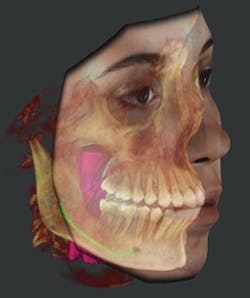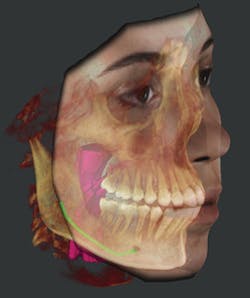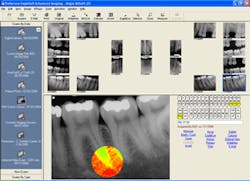"Mission Critical" technologies
by Andrew Koenigsberg, DDS, and Mason Kostinsky
A key driver that is forcing change is evolving patient expectations. Most dentists understand that they must continually update their clinical skills, but they are often not cognizant of patients' evolving "customer service” demands. To remain competitive in the modern dental market, dentists must identify and implement "mission critical” technologies. Experts, including Drs. Gordon Christensen, Joe Blaes, Roger Levin, and Paul Feuerstein, all agree that digital radiography, digital practice management systems, and digital impressioning will become must-have technologies. Additionally, new technologies such as online patient engagement platforms, Internet marketing tools, smartphone point-of-sale systems, and CBCT will enable high quality patient care and practice growth.
Mission Critical Clinical Technologies
New technologies can impact clinical practice in several ways. They may enhance current services, allow for new services, or improve the patient experience. When these services become the clinical standard of care or evolve into a widespread patient expectation, they become "mission critical.” When this point is reached, factors such as cost, space, ROI, and learning curve become secondary, as a practice will lose value and patients if it does not add them to the office.
Digital radiography
Thirty years after its introduction, more than half of dental offices now have digital radiography. Dental students and assistants are no longer trained in manual processing. The newest sensors not only offer reduced radiation and easy transferability, but they often have additional diagnostic features such as caries detection and image enhancement software, magnification, settings for individual practitioners, settings for different treatment modes, and more.
An often-overlooked advantage of digital radiography is its ability to get an immediate image. This allows the dentist to determine whether critical information has been recorded. When it hasn't, the sensor or X-ray unit can be shifted and a new image can be taken instantly, which allows for real-time feedback. Rather than taking four bitewings and hoping there is no overlap, or that the tooth beyond the margins of metal crowns has been captured, it is easy to get diagnostic images. While all these factors are important, the one that may make digital radiography "mission critical” is that patients are aware of the radiation reduction with digital sensors.
Optical scanning-digital impressioning
While impression materials have been a mainstay of restorative dentistry, they are quickly becoming obsolete. In addition to being messy, expensive, and hard to disinfect, patients almost universally dislike them. While modern impression material can be very accurate when everything goes right, clinical reality is often much different. A 2005 survey of labs conducted by Lab Management Today magazine found that 59% of impressions did not provide technicians with adequate details for a quality restoration. As with digital radiography, digital impressioning has the advantage of immediate feedback. The doctor can see the virtual die in real time and assess its quality. Some software makes it possible to check for adequate clearance in all dimensions. If there are inadequacies, the preparation can be modified and a new image can be taken within minutes instead of weeks, and at no additional cost. New all-ceramic materials are often processed by CAD/CAM, adding to the efficiency of a digital model. As patients become aware of optical impressions, dentists who want to remain competitive will have to incorporate this technology.
Precision-guided implant placement
It has been almost 30 years since Dr. Branemark introduced osseointegrated implants to the U.S., and there is now widespread acceptance on the benefits of implant treatment. Lower cost implants have been introduced during the last few years. Precision surgical guides make the placement of most implants simple and within the realm of service for most GPs. In the past, these guides were difficult and expensive, so their use was limited to the most difficult cases. With the introduction of cone beam computed tomography and CAD/CAM integration pioneered by Sirona, it is now possible for guides to be fabricated in minutes for about $30. This opens a new era in implant treatment as GPs will be able to place the majority of routine implants at a lower cost and with reduced surgical trauma.
Misssion Critical Practice Management Technologies
Technological advances and patient expectations have enhanced existing management technologies and led to new services that manage front office systems, enable practice growth, and add patient convenience. Business and patient demands are being met by more powerful Internet services, which are capable of hosting large amounts of data and running robust applications. Cloud computing, the concept of running applications and storing data across the Internet, has tremendous direct business advantages for practices.
Cloud-based practice management platforms
The advantages of cloud-based practice management platforms are numerous. Data access is no longer confined to a few PCs within a practice. Any computer (or tablet) running a web browser can securely access patient data. Multilocation practices can store data on a single, universal database, so patient information can be accessed in any practice location.
Furthermore, cloud-based applications remove the responsibility of data backup from the practice. Most cloud applications are securely backed up in real time, with data stored on many servers throughout the country. Since the application itself is not running in the practice, hardware requirements and maintenance costs are greatly reduced. Practices will no longer be responsible for installation of software updates because updates will occur automatically. From a management standpoint, cloud-based practice management systems provide intuitive user interfaces with more efficient workflows and more integrated tools (patient confirmation, patient communication, electronic claims submission, patient education, etc.).
Some cloud-based platforms provide patients the convenience of logging into their own "portal,” a secure Internet page that allows them to review treatment, view patient education videos, pay bills, and schedule appointments. These are all services that patients have come to expect from other businesses and will soon expect from their dental practices. Practices that provide these conveniences will remain competitive in the dental market.
While cloud-based practice management platforms have been around for several years, this February marked a significant shift toward converting management systems to the cloud. Henry Schein introduced a Beta version of Dentrix (Dentrix Ascend), which can be accessed through Google Chrome on a Mac or PC, and on an iPad. Curve Dental has been a pioneer in cloud-based management solutions since 2004. Patterson Dental offers several cloud-based back-up options (PattLock and DDS Rescue), a cloud-based patient education product (CAESY Cloud), and will soon be releasing Eaglesoft Web, which allows a dental provider to connect to the office patient database to review patient/practice information while away from the office using any device with internet capability.
Online practice management providers will have a pricing structure in which practices pay a monthly fee for the use of the online service, similar to a utility. While the pricing over time may be more expensive, it will eliminate large upfront and maintenance costs for software, hardware, networking, and updates. Dentrix Ascend pricing also includes some additional add-on modules for a single monthly price.
Patient engagement tools
Some practices that do not have a comprehensive, cloud-based management platform are taking advantage of patient engagement services such as SmileReminder, Revenue Well, and Demandforce. These services, which can be accessed on the Internet, provide communication tools to patients within the practice. Practice administrators can easily send email and text appointment reminders, newsletters, post-appointment reviews, and other patient communications. Also, most engagement platforms provide marketing opportunities by linking patient reviews to Google and other Internet directories, as well as to the practice's Facebook page, Twitter account, and website.
Internet and social media marketing tools
The Internet has changed the way that patients search for health care providers. With over 82% of adults online, websites, Facebook pages, and Twitter accounts have become critical for generating new patients and building your reputation. Internet and social media marketing tools abound. Many firms offer services and tools to market and measure results. While the topic of Internet and social media marketing warrants an article itself, there is no question that practices must have an understanding of the technologies that can cost-effectively promote and grow the practice.
Smartphone and point-of-sale platforms
While it is still in very early stages, Smartphone POS systems (that allow patients to pay for dental treatment using their phone) enables quick and easy patient walkout, and can potentially offer marketing opportunities through Smartphone apps. In addition, the convenience of paying with a smartphone attracts and retains patients by providing a "wow” factor that positions the practice as modern and technologically advanced. Also, payment processing fees through Smartphone POS systems are often less expensive than standard credit card processing fees.
Andrew Koenigsberg, DDS, completed prosthodontic residency in 1983. For the past 30 years, he has been in private practice in Manhattan, N.Y. In 2004, he and his partners opened Gallery57Dental, which incorporated a CAD/CAM ceramics lab. He cofounded "CAD/CAM Excellence,” an advanced education program for the dental community. Reach him at [email protected].
Mason Kostinsky has served as chief operating officer and director of marketing and business development at Gallery57Dental since 2004. In addition, Mason is president of Infinity Practice Development and cofounder of CAD/CAM Excellence, an advanced education center to promote practice growth through CAD/CAM technology. Reach him at [email protected].
Past DE Issues


